Starch and Eggshells as additives to Earthen Construction
Earth is one of the oldest and most widely used building materials with approximately 50% of populations in developing countries living in earthen dwellings. Earth is a low-cost, readily available construction material, usually manufactured by local communities in the form of adobe blocks or wattle and daub structures. I am interested in enhancing the strength of earth using biomaterials. I have chosen to use cassava starch and eggshells as additives to clay to determine if they can act as strengthening agents.
Soil is typically a mix of gravel, sand, clay and silt which have varying particle sizes and act together with the smaller particles filling the voids between the larger ones. The more densely packed the material the stronger the soil is. At Valldaura I had access to pure clay. It is typically bad for earth construction because there is no interlocking between the particles, and clay tends to shrink significantly upon drying. In adding eggshells and starch to it I hoped to improve its characteristics as a construction material.
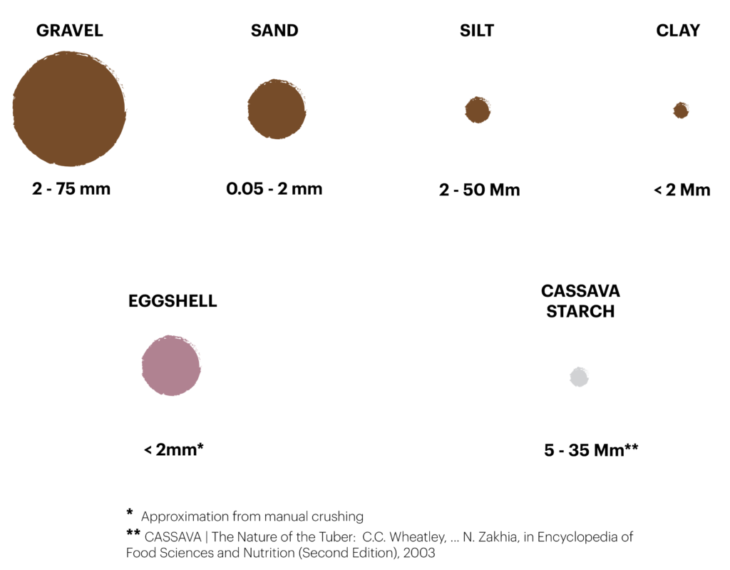
Particle size distribution
I had previous experience using starch as an additive to earth blocks and wanted to use it again as it appeared to improve the compressive strength of compressed earth blocks. Starch is a common type of carbohydrate found in a large variety of staple foods. It is a fine white powder that is insoluble in cold water and has adhesive properties. It is made up of 2 polysaccharides; Amylopectin(70-80%)and amylase(20-30%). Amylose is water soluble and responsible for the gelatinous properties of the starch while Amylopectin bonds well with other substances and contributes to starch’s ability to change from a liquid to a thickened substance.
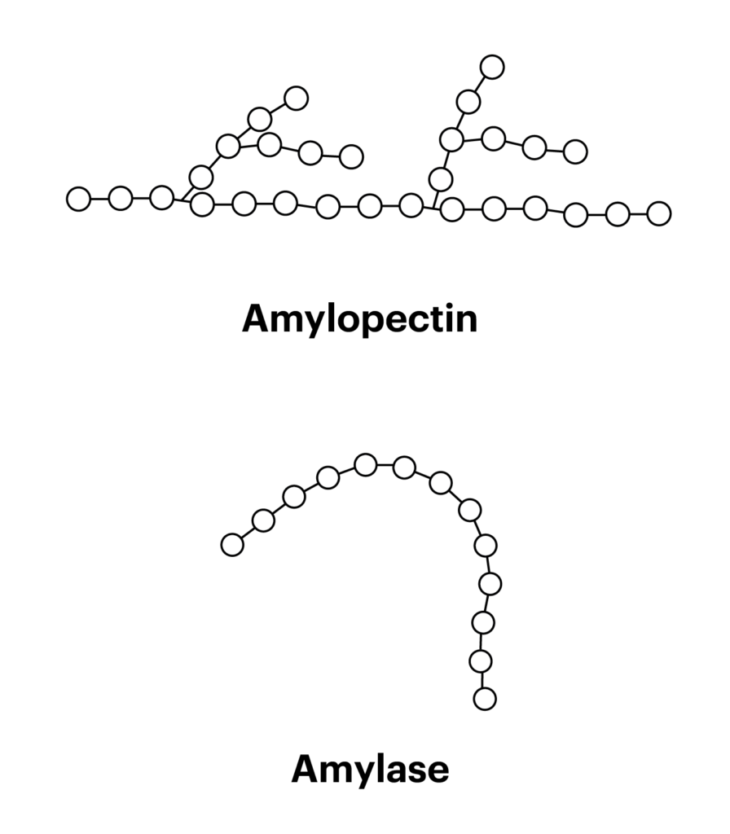
Starch components
Eggshell is made up of calcium carbonate and is a common waste product at Valldaura. In my desk study I also found that eggshell has been used to improve starch-based bioplastics.
Starch Preparation
Starch can be obtained by grating the cassava, putting it in water and drying the fine particles that are left behind in the water. The cassava itself can still be eaten it will just have a lower starch content. From experience, the process is tedious to perform on a small scale and I would need to process more cassava than I could ever eat and so I bought some starch from a small Venezuelan grocer.
Eggshell Preparation
The goal was to crush the eggshell into small enough particles that they could easily mix with the starch and clay. I found information online that suggested to boil the eggshells first for 15 minutes to sterilize them then to heat then in the oven at 200 degrees celsius for 20- 30 minutes then to grind them into a powder. I found that the eggshells were difficult to crush into a fine powder. I attempted using a blender, a rolling pin and a mortar and pestle however the eggshells remained in large pieces than the maximum 2mm I was aiming for so I attempted higher temperatures to see if the eggshells could be ground more easily. I found that it was easier to grind the shells after burning them at 400 degrees celsius in a kiln. There was not much of a difference in the ease of grinding at lower temperatures. I did not go beyond 400 degrees as the eggshells began to incinerate and I did not want to heat them to 500 degrees at which temperature the calcium carbonate would break down into calcium oxide and release carbon dioxide into the atmosphere.
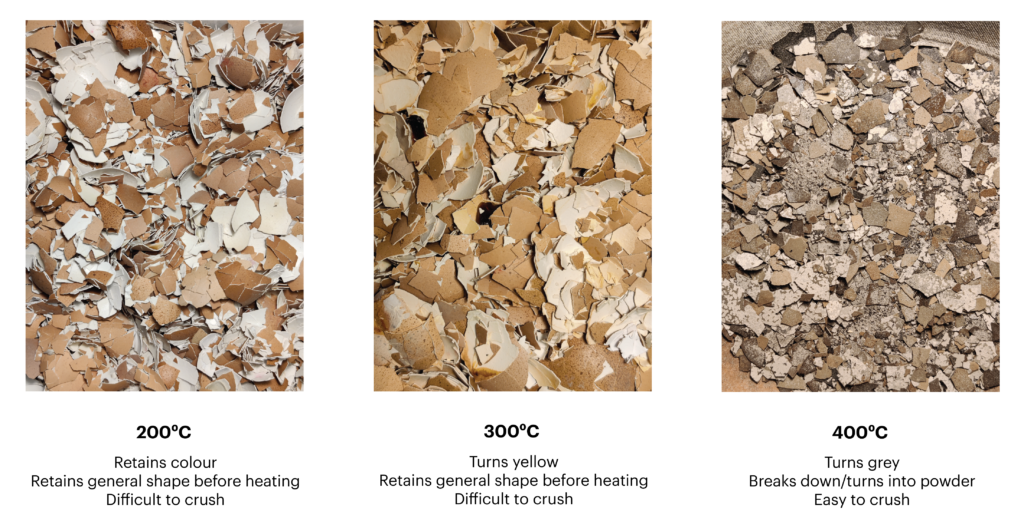
Eggshells at different temperatures

Ground eggshell
Testing
From research done by TU Delft I found a paper on the use of corn starch to make a building material by mixing it with sand and water. They applied heat to activate the starch so I explored making samples with and without heat to see what effect it has.
a. No heat
I made a 100 x 100 mm x 50 mm high block using 50% clay 30% eggshell and 20% starch and found that the block was difficult to remove from the mould, which is typical of blocks with too many fine particles. The resulting block was quite strong. It passed the drop test, which is a common test for earth blocks and indicates that the block would be suitable for construction.
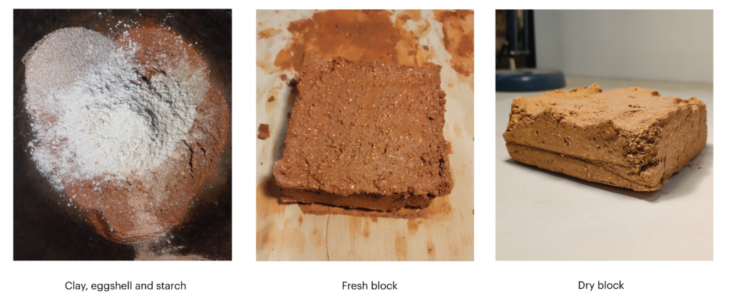
b. Heat
When heated in the presence of water, starch expands and becomes a very viscous liquid as shown below. I wanted to see if this change had any impact on the soil mix.
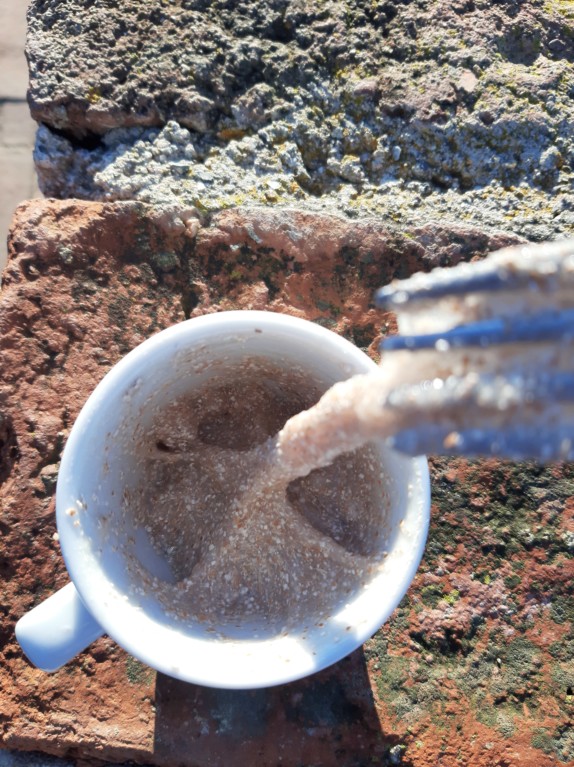
Starch and eggshell mix after heating (1:1 ratio)
For my samples I used clay cups as my mould the same mix in the microwave for 1 minute at the highest setting and in an oven at 200 degrees celsius for 20 minutes. The mix in the microwave expanded to fast and cracked, after cooling and drying I removed the mix from the mould and it did not hold its shape. The mix in the oven retained its shape and in the next term I would be interested in making more moulds in this shape and performing a tensile test on them known as the Brazilian Test.
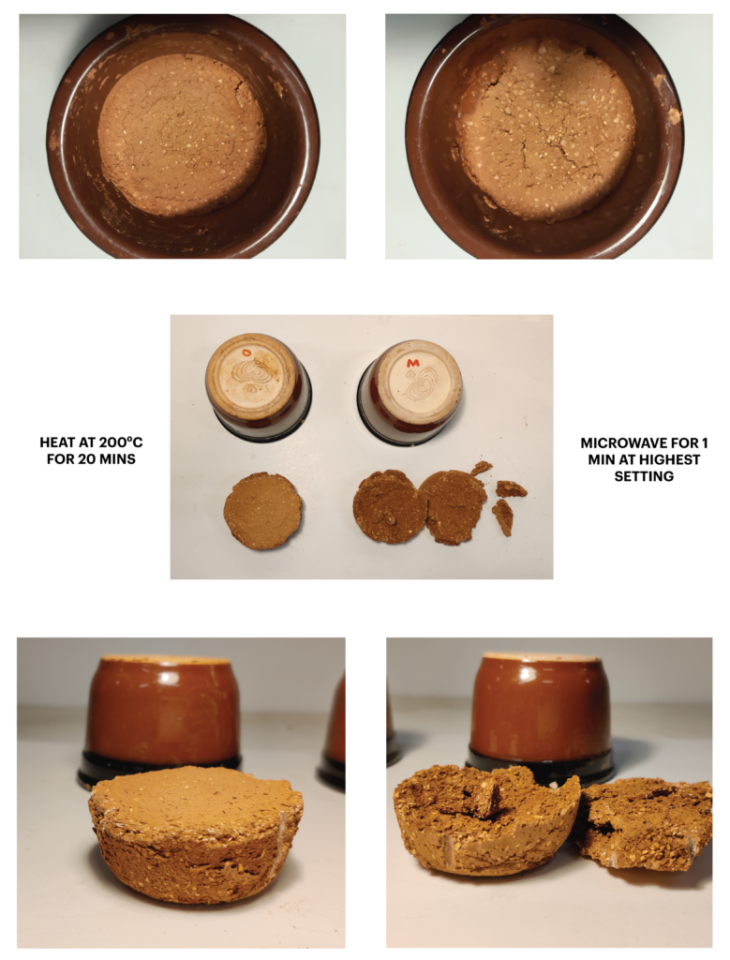
Heated samples
The final sample set is still drying and is made up of
- Blocks made with the 300 degree eggshell and clay:egg:starch ratio of 5:3:2
- Blocks made with the 400 degree eggshell and clay:egg:starch ratio of 5:3:2
- Block made with the 300 degree eggshell and clay:egg:starch ratio of 1:1:1
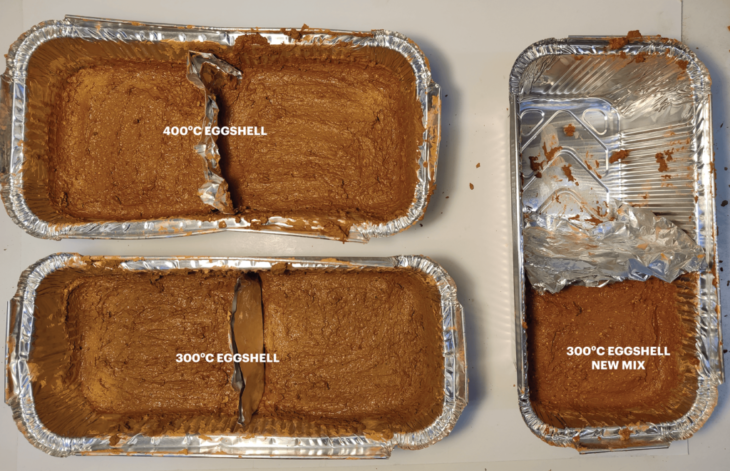
Samples still drying
c. Other experiments
Out of curiosity I also wanted to see how the soil mix would work as a plaster and how thin the material could be spread out so I spread a thin layer on a piece of cardboard and let it air dry. The material shrank and pulled the cardboard with it forming a curved surface. The material was however very brittle. It had cracks and broke easily when touched. This sample was not heated.

Thinly spread mix
I also made a 1:1:1 mix and heated it to make slightly thicker plates that were very strong and required a lot of force to break by hand.
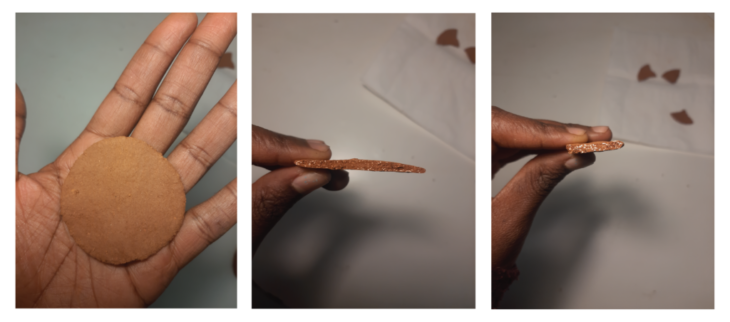
1:1:1 sample
In the next semester I will continue to develop and test a material mix as well as investigate the possibility of 3D printing the material.
Student: Zani Gichuki
Faculty: Kya Kerner